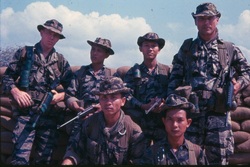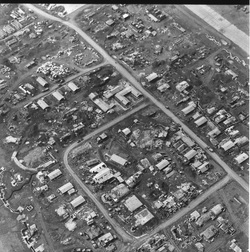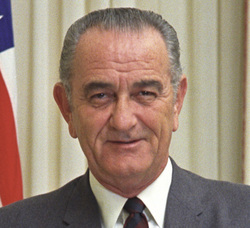Early Intervention

In order to stop the spread of communism, the United States trained the Army of the Republic of Vietnam and provided the south with military advisers. In August 1964, a US warship was attacked by North Vietnamese torpedo boats in the Gulf of Tonkin. After this incident occurred President Johnson addressed the nation and explained, "In the larger sense this new act of aggression, aimed directly at our own forces, again brings home to all of us in the United States the importance of the struggle for peace and security in southeast Asia. Aggression by terror against the peaceful villagers of South Viet-Nam has now been joined by open aggression on the high seas against the United States of America." (1) In response to this attack Congress decided to pass the Southeast Asia Resolution. This act all allowed President Lyndon Johnson to conduct military operations in the Vietnam without a declaration of war. On March 2, 1965, US aircraft began bombing targets in Vietnam and the first troops arrived.
Shocking Tet Offensive

Attack at Khe Sanh
In January 1968, the North Vietnamese and the Viet Cong began the massive Tet Offensive with an attack on US Marines at Khe Sanh. The Viet Cong continued to attack cities throughout South Vietnam but were beaten back with heavy casualties. The Tet Offensive still managed to scare the American people, who had previously thought the war would be an easy defeat.
Vietnamization

President Lyndon Johnson
Following the Tet Offensive, President Lyndon Johnson chose not to run for reelection. Richard Nixon was elected and developed his own plan for ending US involvement. On November 3, 1969 Nixon addressed the nation and proclaimed, "The defense of freedom is everybody's business not just America's business. And it is particularly the responsibility of the people whose freedom is threatened. In the previous administration, we Americanized the war in Vietnam. In this administration, we are Vietnamizing the search for peace." (2)
He hoped to strengthen the Army of the Republic of Vietnam so that it could fight the war by itself in this process known as Vietnamization. United States troops were withdrawn from Vietnam and the Army of the Republic of Vietnam was given more responsibility. The Army, however, was ineffective without the help of the US troops.
He hoped to strengthen the Army of the Republic of Vietnam so that it could fight the war by itself in this process known as Vietnamization. United States troops were withdrawn from Vietnam and the Army of the Republic of Vietnam was given more responsibility. The Army, however, was ineffective without the help of the US troops.
